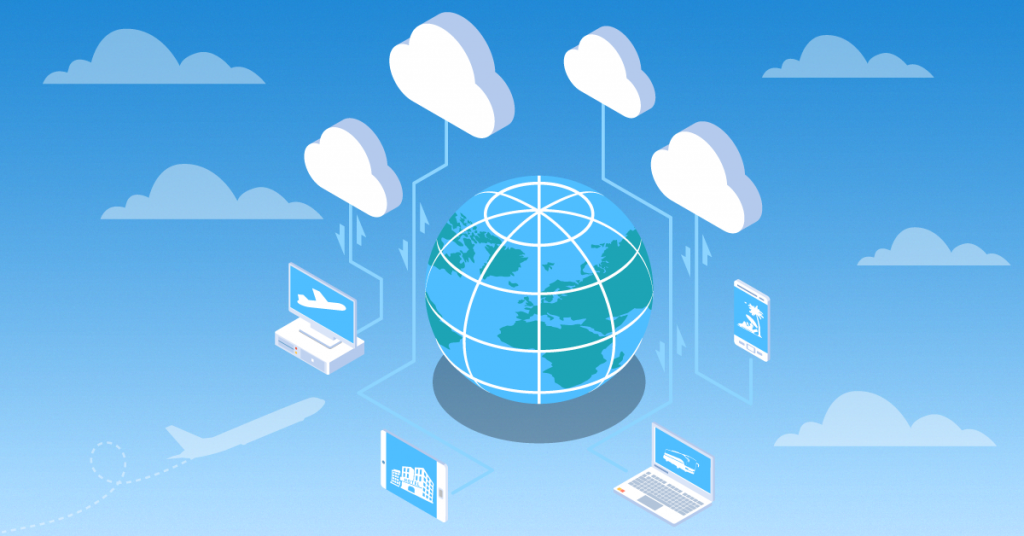Eighty-two percent of travel executives say that increasing revenue is their top priority over the next two years, according to Accenture recent travel cloud survey. This view is no surprise considering the travel industry is still below 2019 revenue levels. But I think it raises two critical questions. What do customers want from travel companies? And how do travel companies deliver?
What do customers want from travel companies?
Seamless delivery.
Across almost every interaction, we (as customers) feel the strain of travel operations ramping back up. We feel the strain of staff as they cope with old and new demands, lower staffing levels, sickness and fellow travelers’ frustrations. We see the broken stitching between processes and departments across a journey that doesn’t go perfectly. And when we arrive at our destination, we’re relieved it’s over.
While we’re there, we see and feel the seams of hospitality travel technology in ways that weren’t noticeable before. Vouchers feel antiquated. Food waste is conspicuous. Queues are commonplace. Any lack of cleanliness is more noticeable—even though destinations are sparkling. When a switchboard operator asks, “To whom may I direct the call?,” it feels old-fashioned, but not delightfully quaint.
We want travel experiences to feel like other experiences, even though the experiences themselves are fragmented across so many travel service providers. First touch resolution is common across so many B2C industries that we suddenly expect it from travel companies.
And they can’t deliver (yet).
We also want travel companies to excel at upselling services—theirs and others’—that lift our experience through a retail marketplace. Many of us are open to paying for supplemental products and services from travel provider if they improve our experience. These extras could include everything from sports classes and fashion consultations to curated food boxes. Comfort, convenience and brand relevance will influence what actually sticks.
How do travel companies deliver?
In my view, travelers’ new expectations are a call for travel companies to finally break out of the strong process foundations laid at the beginning of the age of rail travel in the 1800s. These processes get in the way of delivering what customers want – new processes and technology is critical to doing this. The good news? Coming out of COVID, 51% of CXOs aspire to pivot into a tech-driven business model1, as part of their strategic priorities over the next two years.
It is certainly easy to say, “Here’s a quick fix. Migrate commercial, operational, and financial systems to the cloud and innovate from there. Today’s problems will be solved.” However, this isn’t true. The travel industry’s needs don’t have scalable quick fixes to these problems. Experience short-falls, contextual upsell problems, and rough seams between departments and providers, are a product of our existing, deeply ingrained ways of doing business in travel.
Right now, travel companies are unlocking smaller opportunities to grow ancillary revenue streams and improve differentiation, while many are avoiding addressing the larger opportunities. Ecosystem partnerships are essential. In fact, 44% of travel executives say that building ecosystem partnerships to combine complementary capabilities is a top business priority today. As digital blurs industry boundaries, there are so many possibilities to deliver multidimensional experiences.
Beyond migration to innovation
To take advantage of these possibilities and further diversify some of their revenue portfolio, travel companies need cloud. And it’s true that travel companies are migrating workloads to cloud and benefiting from cost savings and efficiency. However, those travel companies that go further and activate what we call the “Cloud Continuum” can have much greater success with ecosystem partners.
What does this “Cloud Continuum” mean?
Cloud can already transform how ecosystem partners work together, making it easier to onboard new capabilities and service providers. It’s the foundation for simplified booking, merchandising discoverability and attribute-based selling, and integrated loyalty programs. In the Cloud Continuum, travel companies will move ever closer to interacting with travelers, combining who they are with their current transactional needs. None of this is possible unless travel companies adopt an ambition to seize cloud’s full potential.
A breakthrough approach to cloud
In our study, my colleagues found that Cloud Continuum companies make up just 12 to 15% of companies globally. Yes, cloud delivers cost savings and efficiencies for them, but their cloud investments are powering continuous reinvention. My colleagues also identified what it takes to become a Cloud Continuum company.
Know where you want to go. With so much pressure to transform experiences and serve “new travelers,” travel companies focus on acting for now instead of developing a flexible strategy over time. It’s essential to understand how cloud should factor into the ecosystem strategy with a realistic view of the gap between the current state and the desired future state.
Establish cloud practices to address your business needs. Continuum travel companies simultaneously focus on non-technology related capabilities across the workforce to smooth the transition and speed positive outcomes. In other words, the business must become infused with the vision of what improvements are possible now, using cloud technologies. Talent and skills development is hugely important because it generates the “pull” that helps improve the business processes driving agility.
Accelerate innovation to deliver exceptional experiences. Cloud Continuum companies make it a top priority to innovate with the experience. The thought shouldn’t be, “What can cloud do?” Rather, decision makers should ask, “What do travelers want from experiences? How do partners want to interact? And at a more technical level, how can cloud enable these expectations?” You can imagine this will require fundamental operating model changes in many travel companies.
Keep committing to the strategy. Cloud Continuum companies have an abundance mentality, not a scarcity mentality. Constantly thinking about costs and limiting resource use is naturally narrow because it ignores the downstream benefits from well-designed innovation and automation. The Cloud Continuum is the opposite of naturally narrow. It pushes leaders to think big and broadly—to go beyond the current state to see the possibilities down the road.
A continuum of new travel revenue opportunities
As we move into the next phase of travel’s revitalization, I expect that we’ll see many fascinating experience bundles from both aviation and hospitality players. The companies that excel here—in making the experiences seamless for the travelers and service providers they work with—will be on the Cloud Continuum, no doubt. They will find an abundance of opportunities to boost revenue.
Source: Accenture






